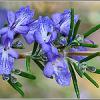I saw this linked somewhere around recently, but maybe not in this thread -? Chemical Inducers of Autophagy That Enhance the Clearance of Mutant Proteins in Neurodegenerative Diseases, 2010
I know the thread is called Supps to enhance autophagy and macrophagy, but whoever marked post off topic didn't bother to take a look at the linked study.
And it contains a lot of interesting, practical info:
"...The first hint that there may be mTOR-independent pathways controlling autophagy was the discovery that intracellular IP3 levels negatively regulate autophagy (41). We have shown that autophagy can be induced by lowering intracellular inositol or IP3 levels independently of mTOR..."
Now inositol is in almost every multi vitamin! 
https://examine.com/...ments/inositol/
"...Lithium ... and sodium valproate, enhances the clearance of autophagy substrates by reducing intracellular inositol levels...due to inhibition of IMPase, which prevents inositol recycling, leading to depletion of cellular inositol and inhibition of the phosphoinositol cycle...
...Lithium and sodium valproate reduced mutant huntingtin aggregation/toxicity in HD cell models and protected against neurodegeneration... lithium treatment in ALS patients... for 15 months survived, but ∼30% of the control patients...died (19). Apart from the neuroprotective effects of lithium (49), this fascinating but preliminary result was attributed partly to autophagy up-regulation...
...Additive Effects of mTOR-dependent and mTOR-independent Autophagy Pathways
The existence of mTOR-dependent and mTOR-independent pathways regulating autophagy allows the combined use of different perturbations to increase the autophagic clearance of aggregate-prone proteins. For instance, although lithium induces autophagy in an mTOR-independent manner by inhibiting IMPase, it also inhibits GSK-3β, which activates mTOR (47, 61). This mTOR activation acts to partially inhibit the autophagy-inducing effects of lithium action via IMPase inhibition (47). We have shown that treatment with rapamycin impedes the GSK-3β-dependent activation of mTOR that occurs with the simultaneous treatment with lithium, thereby eliminating the undesirable effects on autophagy resulting from mTOR activation. Combinatorial treatment with rapamycin and lithium enables greater autophagic clearance ...Moreover, this strategy may also benefit from the cytoprotective effects of GSK-3β inhibition occurring as a result of lithium treatment due to activation of the β-catenin-T-cell factor pathway, which may serve as an additional protective effect in the context of neurodegenerative diseases in which there are secondary apoptotic insults (47, 62).
We have further shown that simultaneous treatment with rapamycin and other mTOR-independent autophagy inducers, such as trehalose, calpastatin, and the SMERs, results in a greater up-regulation of autophagy than the single treatments alone (48, 50, 60). The combined therapy approach may minimize the side effects arising from these treatments by lowering the required doses of each compound, thereby providing a safer strategy for long-term treatments. Therefore, the use of combination treatment with lower doses not only provides additive mechanisms for enhancing autophagy but also may abrogate undesirable effects resulting from the perturbations of these signaling pathways on their own..."
http://www.jbc.org/c...11061.full.pdf3
Now Rapamycin is an immunosuppressant increasing the risk of cancer and also causes glucose tolerance and insensitivity to insulin and can cause lung toxicity etc.
"...In separate studies conducted by Zhang et al., pterostilbene was shown to inhibit apoptosis and induce autophagy in VECs counteracting the proatherosclerosis effect of oxidized low-density lipoprotein (oxLDL) [34, 35]. The cytoprotective mechanism of autophagy involves removal of abnormal proteins that results from oxLDL accumulation [36]. Zhang and colleagues have demonstrated that pterostilbene treatment induces autophagy in oxLDL-stimulated VECs through activation of AMP-activated protein kinase (AMPK), intracellular calcium (Ca2+), and mammalian target of rapamycin (mTOR) signaling..."
http://www.hindawi.c...cl/2013/575482/
Off topic, but interesting as everything is connected and avoiding the oxidation of LDL in the 1st place and all the below downstream effects seems like a bloody good idea. Especially as LDL is used in the building of telomeres:
"... Treatment with pterostilbene was shown to inhibit oxLDL-induced apoptosis, suppress oxLDL-induced OS, and reduce expression of the pro-apoptosis proteins Bax and p53. Pterostilbene treatment also inhibited NF-κB activation, an instrumental mediator of OS in VECs [34]. Furthermore, pterostilbene treatment suppressed oxLDL-induced expression of MMP, caspase-3/9, and attenuation of LOX-1 signaling [34]. Previous studies have shown that OS leads to LOX-1 activation that further stimulates production of OS creating a positive feedback loop that is pathogenic to vascular cells [38].
Pterostilbene’s modulation of LOX-1, NF-κB, and the antioxidant enzymes SOD and catalase indicate strong antioxidant and anti-atherosclerosis effects that may be clinically significant..."
"...The objective of the present study was to assess various antioxidative activities of Rosmarinic Acid (RA) and its effect on oxidation of Low Density Lipoprotein (LDL)...
...The antioxidant activity of RA was evaluated by the DPPH radical scavenging capacity. Fig. 1 shows the percentage of DPPH radicals scavenging capacity with BHT as reference. In the DPPH scavenging assay, the IC50 (the concentration required to scavenge 50% of radical) values of RA and BHT were 0.5±0.03 and 0.06±0.004 μM, respectively. The data obtained show that RA is a free radical scavenger and may act as a primary antioxidant which can react with free radicals by donating hydrogen.

Free radical scavenging capacities of the RA and BHT
http://scialert.net/...bs.2012.301.307
Note that BHT also has lipid disrupting effects on the virii that use lipid layers to disguise themselves from the immune system etc, such as CMV (the immune sys killer), HSV, EBV, HIV, IFV etc. and that the study designed to discredit it by showing pro cancer activity used the HED of 30 grams a day chronically IIRC..!
Edited by Logic, 27 February 2016 - 07:50 AM.


































































